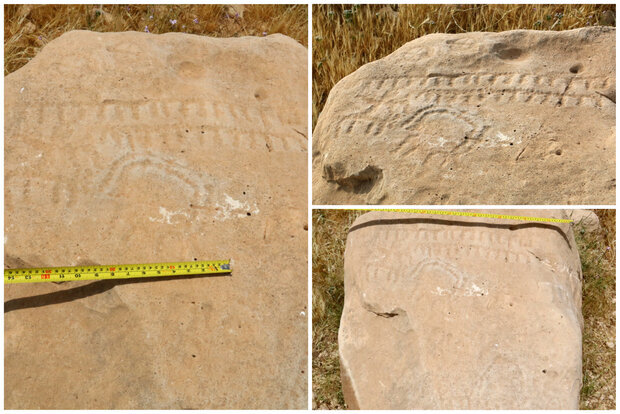INSUBCONTINENT EXCLUSIVE:
extraordinary insight into the prehistoric life across the southern Iranian village.Discovered in the Kazerun region of Fars province, the
addition to adding another significant evidence to paleontological studies, has underlined the importance of focusing on such studies in the
engraved on the upper surface of the object, which measures one and a half meters long, and its widest part is one meter and twenty
From the traces left on the lateral surfaces of the rock, it is clear that the lower half of the rock has been concealed in the soil for a
both of which are oriented to the right, and one of them has large branches that continue in a crescent shape to the back of the animal.The
expert suggests some depictions on the prehistorical work of art may refer to the domestication of horses in the southern Iranian region.He
is carved at a short distance from these two other animals and a little higher, two continuous lines can be seen, from each of which small
distance from each other, in each of which two diagonal lines are drawn so that the shape of a plus sign is created in each
branches of a four-limbed animal that can be seen in the upper part of the petroglyph, are drawn in this part as well, he added.Along these
arches, a line is drawn that after about 20 cm in length, with an angle close to the vertical, continues to the top of the portrayal and
extends about 20 cm, and returns slightly inward again, Abbaspour said.Comparing the object with other similar historical monuments, he
comparative studies on petroglyphs discovered on the plateau of Iran, the newly-discovered petroglyph dates back to the Bronze Age; a time
the striking features of this painting, which makes it more prominent than some other similar works, is the presence of abstract images on
part of the aforementioned lines, we see two circles that are similar examples of which have been seen on petroglyphs discovered both on the
this painting is determined, we may consider it depicting a kind of ritual or a common way of life of the people in the plain of Kazerun
various geographical and historical reasons, and to date, based on the results of studies on the remains of human habitation in this region,
it can be said that the human presence in Kazerun dates back to the Neolithic period, that is, about 30,000 to 40,000 years ago, the expert
Heritage list, according to the tourism office of Khomein that its Teymareh region is home to numerous petroglyphs.In March 2020, a team of
entomologists and archaeologists concluded one of Teymareh petroglyphs showcases a six-limbed creature with the head and arms of a praying
The rare 14-centimeter rock carving was first spotted in the Teymareh rock art site during surveys between 2017 and 2018, but could not be
identified due to its unusual shape.According to a survey by the international experts Jan Brouwer and Gus van Veen, rock art was made
40,000-4,000 years ago.Experts believe prehistoric rock arts provide insights into past eras and cultures as archaeologists classify the
tools for the carvings by specific eras Incising tools include flint, metal, or thigh bones of hunted prey.AFM

